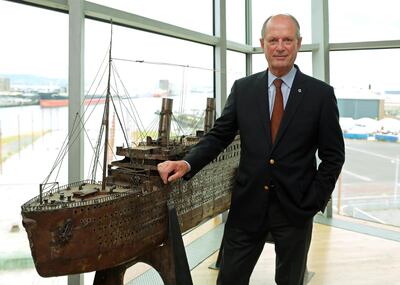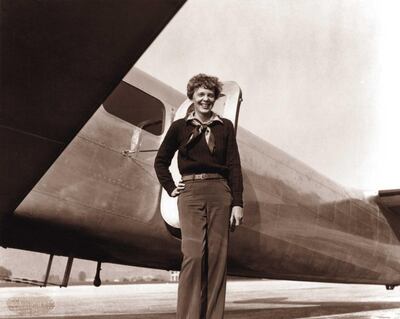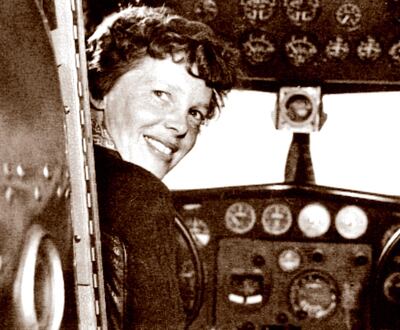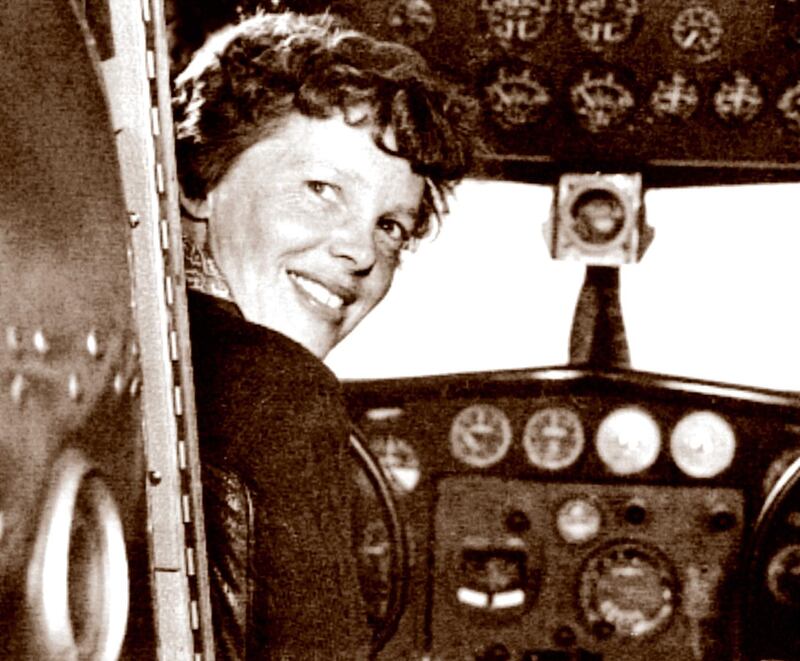It has been more than 80 years since Amelia Earhart vanished without trace over the Pacific Ocean on her famous attempt to fly around the world.
Like many others before him, the most recent attempt to solve the mystery, by Titanic discoverer Robert Ballard, has also ended in failure.
While the story of the pioneering American aviator has been told many times, what few realise is that that the flight nearly came to grief before it began; not in the Pacific Ocean but over the Arabian Peninsula.
Although she may not have realised it, Earhart was flying into controversy when she announced the proposed route for her flight in 1936.
Other pilots had previously circumnavigated the Earth, but hers would be the longest, 29,000 miles, as close to the Equator as possible,
While much of the route would have to be over sea, flying over land was much preferred in those early days of aviation, in case of an emergency landing.
Read More
[ Renowned British fighter aircraft is en route to Abu Dhabi ]
[ How one intrepid photographer captured the first image of 'Zayed the Great' ]
[ In 1974, Concorde's visit to the Arabian Gulf was anything but harmonious ]
For the Middle East segment, Earhart wanted to fly over the Arabian Peninsula, what was then known as Trucial Oman, incorporating today’s Oman and what is now the United Arab Emirates, and controlled by Britain through 19th century treaties.
One of the air corridors, provided with landing strips, followed the Arabian Gulf from Iraq to Sharjah and was already in use by Britain’s Imperial Airways on its route from London to India and Australia.
The other went overland from Africa, crossing the Red Sea at its most southern point, then over Yemen and Oman before heading to Karachi in modern Pakistan.
Her plans soon rang alarm bells in London. Britain's new air routes to her colonies were fiercely protected. Documents in the Arabian Gulf Digital Archive, show Britain was already facing multiple requests from foreign powers to let their aircraft fly through the region.
In 1936, both Air France and KLM of the Netherlands had approached Britain to seek permission to use routes and landing facilities from Bahrain to Muscat.
Britain’s tactic was to protect what was effectively an aviation monopoly by stalling, telling both the French and Dutch governments that the decision rested with local sheikhs.
“His Majesty's Government could not say what facilities, if any, could be afforded to the Royal Dutch Service in regard to the intermediate stage between Bahrein and Gwadur until the question had been more thoroughly examined and the new route put to the test of practical experience,” was a typical response to KLM in April 1936.

Attempting to tie the Dutch in more red tape over the Arabian Gulf route, another memo noted: “The present agreement between His Majesty's Government and the Sheikh of Sharjah does not, in fact, cover the use of the Sharjah aerodrome by other than British aeroplanes, and that it would therefore be necessary for His Majesty's Government to extend their agreement with the Sheikh before they are in a position to comply with the Dutch request.”
The request from a high-profile celebrity like Amelia Earhart added another dimension to these sensitive negotiations.
At the time, Earhart was 38, and made headlines wherever she went. In 1932, she became the first woman to make a solo transatlantic flight, and earned the title “Queen of the Skies” in the American press.
She was a passionate advocate for women pilots, becoming the first president of the Ninety-Nines, an organisation to support female fliers.
She started planning her biggest adventure in 1935, a round-the-world trip in her heavily modified twin propellor Lockheed Electra, built to her specification in California.
Her first plan was to fly west, but this was abandoned after a belly landing in Hawaii badly damaged the Electra. After repairs, she decided to go East, first crossing the Atlantic.

First she had to get around the British and news of her plans reached London via a request from the American Ambassador through the India Office.
In the typical language of officials, London wondered if the government of India had any objections to “a projected flight by Miss Earhart, an American”. In particular there was her proposal to “cross the Arabian territories of Muscat”.
With an almost audible note of triumph, the British official noted that while there was no objection to the India route, permission for the Arabian territories was impossible.
“I propose to suggest that [the] U.S. Ambassador should be informed no flights over the Arabian territories of Muscat are permitted without special authorisation from the Sultan and that there is no hope of permission being obtained from His Highness at the present time for private flights in this area,” the bureaucrat wrote.
At the time, Muscat and Oman were two states. The Sultan of Muscat was resisting Britain’s attempt to gain greater control of his airspace, and Earhart’s plans played right into the middle of this diplomatic wrangle.
Britain now attempted to persuade the Sultan to let Earhart fly over his territory, sensing this might set a precedent for the future. It failed.
The result was grim warning from London to Earhart. The proposed route was "desolate, inaccessible and entirely unsuitable for any emergency landings, should Miss Earhart, unfortunately, be forced to make one,” the Americans were told in January 1937.

The Sultan, it was added, was worried that "a forced landing in an inaccessible area” might result in “death or injury to aviators at the hands of wild tribesmen”.
With the proposal now blocked, Earhart was forced to follow a sea route just off the south coast of Oman.
The change in plans meant another record. She reached Karachi from Assab in present day Eritrea on June 15, 1936, after a gruelling 20-hour flight that was also the first ever non-stop flight from the Red Sea to India.
Two weeks later, she had reached Lee, in Papua New Guinea. On July 2, the Electra took off for the first stage over the Pacific to an airstrip built for the trip on Howland Island, a distance of over 2,600 nautical miles.
The aircraft failed to arrive, and Earhart and her navigator Fred Noonan were never seen again.
The search for what really happened still goes on. Most recently attention has focused on Nikumaroro Island, in Kiribati, as a possible crash site.
Last month, an expedition led by oceanographer Robert Ballard searched the ocean around the coral atoll to look for evidence of the aircraft. They found nothing, but plan to return.
Meanwhile researchers believe they just have rediscovered fragments of bone taken from Nikumaroro by a British colonial administrator in 1940. Presumed lost for decades after being sent to Fiji, they may have been found in a local museum and include parts of a skull thought to be female.
Further tests, including a possible facial reconstruction and the extraction DNA will follow - and perhaps, finally, the truth about what happened to Earhart.







